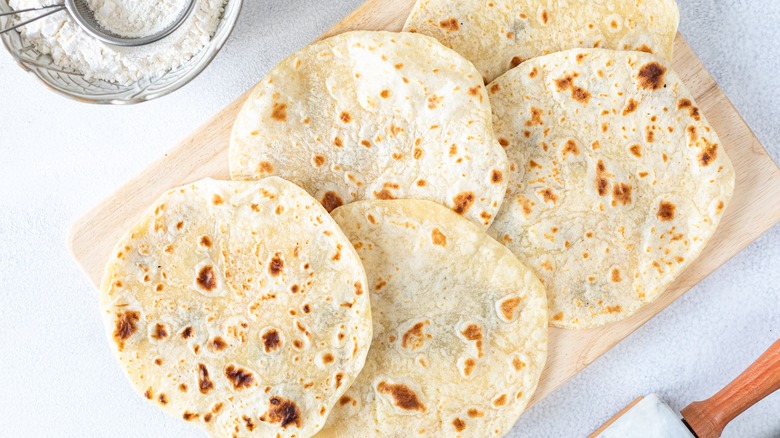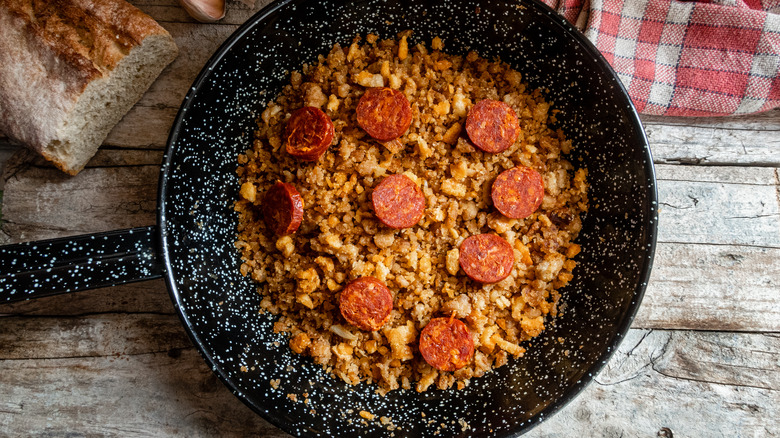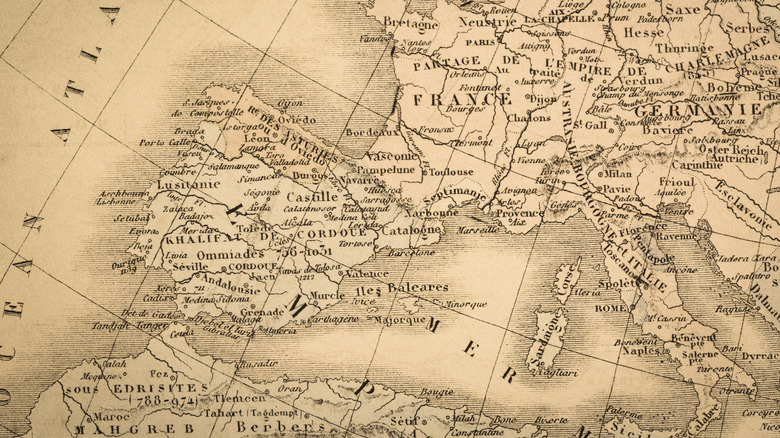Migas Takes Scrambled Eggs To Crunchy, Creamy New Heights
The Iberian Peninsula of Portugal and Spain is home to many beloved hearty dishes, from paella and arroz de pato to patatas bravas and cured ham. Come breakfast time, you'll likely find diners tucking into steaming plates of migas. The comforting dish, which is also popular in Mexico, incorporates fried tortilla strips, garlic and spices, and melted cheese into eggs. There's also a Tex-Mex version that adds chile peppers, onion, and hot sauce to the mix.
Migas, which translates to crumbs in English, gets its name from day-old tortillas that are too stale to eat on their own. When cut into strips, fried to a golden crisp in vegetable oil, and mixed with eggs and cheese, they make for the perfect crunchy base for an otherwise creamy dish. As you might guess from its ingredients, migas are super easy to make at home — it's an excellent way to use up the leftover tortillas from last night's taco party.
Variations on a theme
Not every plate of migas looks the same, especially when it comes to regional signatures in Spain, Portugal, Mexico, and the United States. Each region has infused its unique touch, ensuring that the dish retains a distinct identity wherever it is enjoyed. Regardless of its variations, however, most migas are made with eggs, cheese, and fried strips of stale tortillas or bread.
In the Southern Portuguese region of Alentejo, migas start with leftover wheat bread fried in lard, representing a rustic, hearty flavor. In contrast, the Central region of Beiras has a soft spot for leftover cornbread, creating a different texture and taste. Over in Southern Spain, you might find migas with breadcrumbs, chorizo, and fried eggs, adding a spicy and rich twist. Meanwhile, in parts of Mexico and Texas, the signature element of migas is the crispy fried tortilla strips, giving the dish its characteristic crunch.
The thrifty origins of migas
No one knows the exact origins of migas, but many historians believe the dish was invented by shepherds in mountainous areas of Spain and Portugal and later adopted by poor communities looking to make use of leftovers. In Spain, one theory has it that the dish was brought to life by shepherds in the former Kingdom of Castile, who would soak stale bread in water and cook it over an open fire. Indeed, migas are sometimes referred to as migas de pastor or shepherd's breadcrumbs.
Mexican migas, on the other hand, didn't come to be until the 20th century, when the hunger epidemic spawned by the Mexican Revolution necessitated thrifty meals as thousands were dying of starvation. The take on the European hash, which is sometimes confused with chilaquiles, swaps yesterday's bread with yesterday's tortillas or, in some modern kitchens, tortilla chips for a quick, easy, and affordable breakfast.


